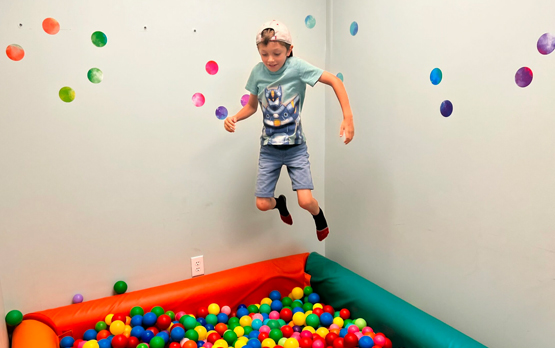
“Sensory Integration is the processing, integration, and organization of sensory information from the body and the environment.” (Ayres, 1994) The sensory integrative process shows how the interactions between sensory systems provide integrated information that contributes to increasingly complex behaviors. It focuses on the sensory-motor factors that affect behavior, skills-development, learning, and activity participation. For most of us, the process of sensory integration happens subconsciously and without effort. However, for others, it requires skilled intervention in order to facilitate.
Challenges in the areas of behavior, attention, “student skills,” body awareness, sensitivity, constant movement, etc may indicate difficulty with a child’s ability to process and integrate the sensory input that s/he is taking in from the environment. Parents may describe their children with sensory integration difficulties as having challenges with tolerating swinging or sliding in the park, being overly sensitive to loud noises such as a blow dryer, vacuum cleaner, or trucks, being offended by bright or fluorescent lighting, or having very picky eating habits.
Engagement in sensory perception and integrative activities through occupational therapy services enables children to be able to participate in all activities that rely on taking in sensory information from the environment in the most effective and functional manner so that they can engage in activities across their environments such as eating at a restaurant with the family, playing effectively with peers, climbing on the playground and using park equipment in an age-appropriate manner, and managing busy store/mall environments with ease.

